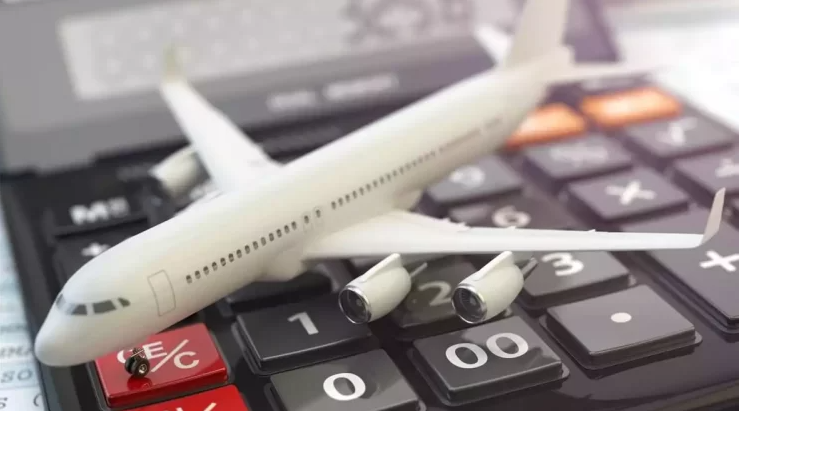the fascinating world of aviation business dvcodes! If you’ve ever wondered what those mysterious codes mean when you see them on your boarding pass or hear them over the intercom during a flight, then this blog post is for you. In this article, we will decode the secrets behind these dvcodes and explore their crucial role in the aviation industry.
Aviation business dvcodes may seem like cryptic combinations of letters and numbers, but they hold significant importance in ensuring smooth operations within the aviation sector. From facilitating efficient communication to enhancing safety measures, understanding how these codes work can provide valuable insights into this dynamic industry.
So fasten your seatbelts and get ready for an informative journey as we unravel the mysteries surrounding airline dvcodes. Whether you’re a frequent flyer or simply curious about how airlines operate behind-the-scenes, this article will equip you with essential knowledge that will elevate your understanding of aviation business dvcodes. Let’s dive in!
Decoding DVCodes in Aviation Business Dvcodes: An Overview
Aviation business dvcodes, also known as airline codes or airport codes, act as a universal language for airlines and airports worldwide. These alphanumeric combinations may appear simple at first glance, but they hold a wealth of information about the flight’s origin, destination, carrier, and even the type of aircraft.
The three-letter IATA (International Air Transport Association) codes are used to identify airports around the world. For example, JFK represents New York’s John F. Kennedy International Airport while LHR stands for London Heathrow Airport. These codes provide crucial information to pilots and air traffic controllers when planning routes or coordinating flights.
On the other hand, two-letter ICAO (International Civil Aviation Organization) codes are primarily used by aviation authorities and regulatory bodies. They help standardize operations across countries by providing unique identifiers for airlines and aircraft types. For instance, British Airways is identified by the code BA while Boeing 747 is represented by B747.
Understanding these dvcodes is not only useful for aviation professionals but also enhances our travel experiences as passengers. By deciphering these codes on our boarding passes or listening to them during announcements at the airport terminal, we gain insights into our flight details such as departure gates or connecting flights.
Understanding the Role of DVCodes in Aviation Business Dvcodes
In the complex and fast-paced world of aviation, precision and efficiency are paramount. To ensure seamless operations, the industry relies on a system known as DVCodes. These codes play a vital role in facilitating communication and coordination between various stakeholders.

DVCodes, or Designator Codes, are alphanumeric identifiers assigned to airports, airlines, aircrafts, equipment types, and more. They provide a standardized way of identifying and categorizing different elements within the aviation ecosystem. From flight booking systems to air traffic control communications, DVCodes enable accurate data exchange across multiple platforms.
For airports, these codes help streamline processes such as ticketing, baggage handling, and gate assignments. By using unique identifiers for each airport worldwide (such as JFK for John F. Kennedy International Airport), DVCodes simplify logistics for airlines and passengers alike.
Airlines also heavily rely on DVCodes to identify their fleets and routes. Each airline is assigned a two-letter IATA code (e.g., AA for American Airlines), which allows quick recognition in schedules or reservation systems. This standardization enhances operational efficiency by minimizing confusion between carriers.
Furthermore,DV codes play an essential role in maintaining safety standards within the aviation industry.
For example,the Aircraft Type Designator Code identifies specific aircraft models.
This information is crucial during maintenance checks,to ensure adherence to regulatory requirements.
Additionally,the Equipment Type Code assists ground handlers with accurately allocating resources based on size,payload,and other specifications.
Overall,DVIcodes serve as a universal language that promotes consistency,effectiveness,and reliability across all aspects of aviation business.
Their implementation has revolutionized how this industry functions today.
From enhancing passenger experience to optimizing air traffic management,DVIcodes have become indispensable tools in ensuring smooth operations.
Well-versed professionals who understand these codes are invaluable assets,supporting companies’ commitment towards excellence in this ever-evolving field
Navigating Aviation Business Dvcodess: Key Insights
In the vast world of aviation business, understanding and navigating through the complex web of DVCodes is essential. These codes play a crucial role in ensuring smooth operations and efficient communication within the industry. Let’s dive into some key insights that can help you navigate this intricate system.
It’s important to grasp the concept behind DVCodes. They are essentially alphanumeric identifiers used to represent various elements such as airports, airlines, aircraft types, and more. Each code carries specific information that aids in streamlining processes and enhancing safety measures.
One must note that there are different types of DVCodes serving distinct purposes. For example, IATA airport codes act as shorthand for identifying airports worldwide – from major hubs like LAX to smaller regional airfields like BHM. Similarly, ICAO airline designators help identify individual carriers across the globe.
To effectively navigate through these codes, familiarize yourself with industry resources such as official databases provided by organizations like IATA or FAA. These platforms offer comprehensive lists of codes along with relevant information to aid your understanding.
Furthermore, staying updated on any changes or updates regarding DVCodes is crucial since they evolve over time due to factors like airport expansions or airline mergers. Ensuring accurate usage will prevent miscommunications or errors when interacting with stakeholders across different sectors of aviation business.
Additionally, investing in technology solutions specifically designed for managing DVCodes can significantly streamline operations. Such systems automate processes related to code validation and synchronization across multiple databases – saving time and reducing manual errors.
Collaboration among all stakeholders involved in aviation business is vital for successful navigation through this complex realm of DVCode intricacies. Effective communication ensures everyone understands their roles while adhering to standardized coding practices throughout the industry.
Leveraging for Efficiency in Aviation Business Dvcodes
Leveraging technology has become crucial for businesses across industries, and the aviation sector is no exception. When it comes to efficiency in aviation business dvcodes, leveraging advanced systems and software can make a significant difference.
One key area where technology plays a vital role is in streamlining communication processes. With the help of sophisticated dvcodes systems, airlines and other aviation businesses can efficiently transmit critical information between different stakeholders. This ensures that everyone involved in flight operations is on the same page, leading to smoother processes and better coordination.
Additionally, leveraging technology allows for more accurate data analysis. By collecting data from various sources such as flight operations, passenger feedback, and maintenance records, aviation businesses can gain valuable insights into their operations. These insights enable them to identify areas for improvement and make informed decisions to enhance efficiency.
Another way technology helps improve efficiency in aviation business dvcodes is through automation. Manual tasks that were once time-consuming and prone to errors can now be automated using intelligent systems. This not only saves time but also reduces human error, leading to increased accuracy and productivity.
Furthermore, advanced tracking technologies like GPS have revolutionized logistics management in the aviation industry. Real-time tracking of aircraft movements enables better planning of routes, fuel consumption optimization, and improved scheduling of maintenance activities. All these factors contribute towards efficient use of resources while ensuring safety standards are met.
Exploring the Impact of Aviation Business Dvcodes Industry Operations
Aviation business DVCodes play a crucial role in ensuring smooth operations within the industry. These codes, also known as destination and origin airport codes, are used to identify airports worldwide. They provide essential information that helps streamline various processes in aviation businesses.
One significant impact of DVCodes is their contribution to efficient flight planning. By using these codes, airlines can easily determine the best routes for their flights based on factors such as distance, weather conditions, and airspace restrictions. This not only saves time but also optimizes fuel consumption, resulting in cost savings for both airlines and passengers.
In addition to flight planning, DVCodes facilitate effective communication between different stakeholders in the aviation industry. Pilots use these codes when communicating with air traffic controllers to ensure accurate routing instructions and maintain safe distances between aircraft during takeoff and landing procedures.
Moreover, DVCodes enable seamless baggage handling across multiple airports globally. By encoding each bag with its respective destination code, airports can efficiently track luggage throughout its journey from check-in to final delivery. This minimizes the risk of lost or misplaced bags while enhancing customer satisfaction.
Furthermore, travel agencies heavily rely on DVCodes to provide accurate information about flight itineraries and fares to customers. By utilizing these codes in their systems, travel agents can quickly search for available flights based on specific departure or arrival locations requested by clients.
It is evident that aviation business DVCodes have a profound impact on various aspects of the industry’s operations. From facilitating efficient flight planning to enabling effective communication among stakeholders and streamlining baggage handling processes – these codes are instrumental in keeping the aviation sector running smoothly.
Conclusion:
In the ever-evolving world of aviation business, DVCodes play a crucial role in ensuring efficient and safe operations. These unique codes serve as a universal language that enables seamless communication between stakeholders within the industry.
Understanding how DVCodes function and their significance is vital for anyone involved in aviation business. From pilots to air traffic controllers, from aircraft manufacturers to maintenance crews, everyone relies on these codes to keep operations running smoothly.
By decoding DVCodes, we gain valuable insights into various aspects of aviation business such as navigation systems, weather conditions, flight plans, airport procedures, and much more. This knowledge empowers professionals to make informed decisions and take appropriate actions when necessary.
Navigating through the complexities of aviation business is no easy task. However, with a solid understanding of DVCodes and their applications across different areas of operation, businesses can achieve higher levels of efficiency. By leveraging these codes effectively, airlines can optimize flight routes for fuel savings while maintaining safety standards. Airports can enhance ground handling operations by streamlining processes based on coded information. Maintenance crews can access relevant data quickly for effective troubleshooting.

